MỘT SỐ YẾU TỐ ẢNH HƯỞNG ĐẾN CHỈ ĐỊNH VÀ KẾT QUẢ ĐIỀU TRỊ CỦA BỆNH NHÂN CHẤN THƯƠNG LÁCH ĐƯỢC NÚT ĐỘNG MẠCH LÁCH
Nội dung chính của bài viết
Tóm tắt
Mục tiêu: Nghiên cứu nhằm xác định một số yếu tố liên quan đến chỉ định và kết quả điều trị bảo tồn chấn thương lách bằng nút mạch. Đối tượng và phương pháp nghiên cứu: Nghiên cứu quan sát có phân tích, hồi cứu và tiến cứu 254 bệnh nhân chấn thương lách được điều trị tại bệnh viện Hữu nghị Việt Đức và Bệnh viện đa khoa Xanh Pôn từ tháng 12 năm 2019 đến tháng 12 năm 2022. Kết quả: Trong số 254 bệnh nhân chấn thương lách mức độ vừa và nặng trong nghiên cứu này, có 83 bệnh nhân được điều trị bảo tồn bằng nút mạch với tuổi trung bình là 36,7 ± 17,3 tuổi. Tỷ lệ thành công về mặt kỹ thuật là 100% và tỷ lệ thành công về mặt lâm sàng đạt 97,6% (81 bệnh nhân). Đáng lưu ý, loại vật liệu nút mạch, vị trí nút mạch không ảnh hưởng đến kết quả điều trị. Kết luận: Nút mạch nên được cân nhắc là biện pháp hỗ trợ cho điều trị bảo tồn không phẫu thuật các trường hợp chấn thương lách độ IV-V và không nên sử dụng thường quy với các trường hợp chấn thương độ III. Nút mạch là phương pháp điều trị an toàn, hiệu quả ngay cả khi có các chấn thương nghiêm trọng phối hợp.
Chi tiết bài viết
Từ khóa
chấn thương lách, nút mạch, yếu tố ảnh hưởng
Tài liệu tham khảo
2. Patil, M.S., S.Z. Goodin, and L.K. Findeiss, Update: Splenic Artery Embolization in Blunt Abdominal Trauma. Semin intervent Radiol, 2020. 37(01): p. 097-102.
3. Yiannoullou, P., et al., A review of the management of blunt splenic trauma in England and Wales: have regional trauma networks influenced management strategies and outcomes? Annals of the Royal College of Surgeons of England, 2017. 99(1): p. 63-69.
4. Godley, C.D., et al., Nonoperative management of blunt splenic injury in adults: age over 55 years as a powerful indicator for failure. 1996. 183(2): p. 133-139.
5. Banerjee, A., et al., Trauma center variation in splenic artery embolization and spleen salvage: a multicenter analysis. J Trauma Acute Care Surg, 2013. 75(1): p. 69-74; discussion 74-5.
6. Crichton, J.C.I., et al., The role of splenic angioembolization as an adjunct to nonoperative management of blunt splenic injuries: a systematic review and meta-analysis. 2017. 83(5): p. 934-943.


